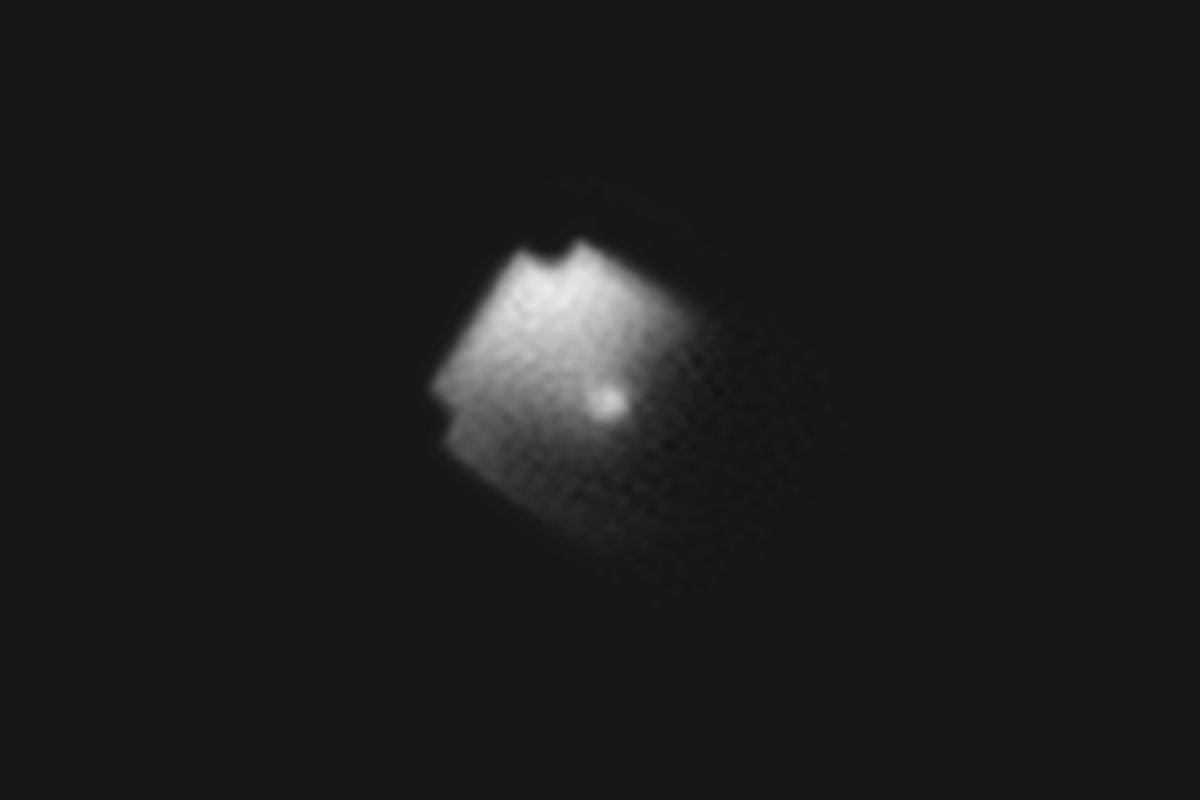A new satellite has become one of the brightest objects in the night sky, sparking concerns among scientists for the future of astronomy.
The bright paths of BlueWalker 3 and other new satellites may approach the magnitude of our neighboring planets in the night sky, making it harder for astronomers to observe the universe without streaks of light pollution from such satellites, a new study in the journal Nature has shown.
BlueWalker 3, a prototype communications satellite launched on 10 September, has a 692-square-foot array, a large flat surface capable of reflecting sunlight back to Earth, like a mirror. According to the study, it has a peak brightness of magnitude of 0.4.
"The startling conclusion from our study is that the BlueWalker 3 satellite is one of the brightest things in the sky," Meredith L. Rawls, co-author of the paper and astronomy research scientist in the Department of Astronomy and DiRAC at the University of Washington, told Newsweek.

"Keep in mind, astronomers use a magnitude system, which is "backwards"—brighter objects have smaller magnitudes, so 0.4 is quite bright," Rawls explained. "There are only about six stars that are brighter in the night sky than this.
"For context, the way magnitudes work is, something that is magnitude 2 is only about 40 percent as bright as something that is magnitude 1. The unaided eye can see objects down to about magnitude 7 from a very dark site. Venus' apparent magnitude in the sky is about -4 (it's extremely bright!)."
A negative magnitude number means an object is brighter: the sun has a magnitude of -27, while the full moon is -13.
"While there is only one BlueWalker 3 so far, it is important to characterize its brightness and understand its impact, since many groups are planning to launch many bright satellites to LEO [low Earth orbit] in the near future," Rawls said.
The issues that may arise with BlueWalker and other bright satellites in the sky stem from the amount of light they reflect back to the ground. As Rawls explained in an article for Astronomy.com, detecting objects during the twilight hours, including near-Earth asteroids, will be hindered by the light reflected by satellites. Satellite streaks in astronomical images may also make it more difficult to detect phenomena like gravitational lensing, as well as altering the outcomes of spectroscopy of distant objects as a result of accidentally observing glints from passing satellites.
Gravitational lensing refers to when huge objects with enormous gravity bend light around themselves, resulting in a lens-like effect, while spectroscopy is the measurement of the wavelengths of light from objects like stars or distant galaxies.
"The problems here on Earth range from interference with astronomical observatories doing sky surveys to a possible interference with migrating birds being misdirected due to its appearance," Brad Young, co-author and lead coordinator of visual observing at the International Astronomical Union Centre for the Protection of the Dark and Quiet Sky from Satellite Constellation Interference, which is based in Paris, told Newsweek. "We know for sure about the first one, we are not yet sure that the second one is occurring."
The authors of the study fear that as more and more satellites are launched into orbit, astronomers may face increasing numbers of problems.
"[BlueWalker 3] was a prototype for AST," the study says. "The later satellites were to be larger and brighter and there were to be several of them so that there would be one above the horizon at all times otherwise phone service would be interrupted. So each night at least one of these satellites and probably a brighter one would be visible at all times."

The researchers suggest in the paper that the brightness of satellites should be taken into account during the authorization process for their launch.
"Despite many efforts by the aerospace industry, policy makers, astronomers and the community at large to mitigate the impact of these satellites on ground-based astronomy, with individual examples such as the Starlink Darksat and VisorSat mitigation designs and Bragg coatings on Starlink Gen2 satellites, the trend towards the launch of increasingly larger and brighter satellites continues to grow," the authors wrote in the paper.
"Impact assessments for satellite operators prior to launch could help ensure that the impact of their satellites on the space and Earth environments is critically evaluated. We encourage the implementation of such studies as part of launching authorization processes."
Do you have a tip on a science story that Newsweek should be covering? Do you have a question about satellites? Let us know via science@newsweek.com.
Uncommon Knowledge
Newsweek is committed to challenging conventional wisdom and finding connections in the search for common ground.
Newsweek is committed to challenging conventional wisdom and finding connections in the search for common ground.
About the writer
Jess Thomson is a Newsweek Science Reporter based in London UK. Her focus is reporting on science, technology and healthcare. ... Read more





